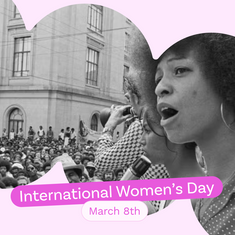
50% of people who sign up for a fundraising campaign never raise a cent. Get fundraising ideas to turn non-starters into go-getters with predictive models.
Had a whole lot of sign-ups …but only a handful of active supporters?
You’re not alone.
Though the campaign is up and running, many sign-ups get stuck on the starting line.

Whether they tried and struggled, or didn’t know where to start, some fundraisers need a little support to get going.
A few years back, I studied one of Australia’s largest and longest-running campaigns. In investigating what worked – and what didn’t – I was shocked to discover that only 20% of participants actually raised anything.
Even more surprising, 90% of the total funds were raised by just 7% of fundraisers. And this is a campaign that’s known for peer-to-peer success.
The hard fact is: Over 50% of people who sign up for P2P campaigns never raise a cent.
But don’t worry - we’re here to help.
Read on for a look at why supporters get stuck and how to nurture them back into action.
It’s not you, it’s me.
I’ve always been curious about fundraising ideas that could help turn campaigns around. In researching this question, I took a look at the Top 5 P2P campaigns from 2021. And we may have found the missing ingredient.
Before I share, it’s worth taking a minute to assess the assumptions we make about how to fundraise when designing campaigns.
Assumption 1: Everyone who signs up intends on hitting their goals.
Imagine if your signup form included the question: ‘Why did you sign up?’ And an available answer ‘Because my friends did’ or ‘I was pressured into it’.
Or what about the question: ‘Do you intend to hit your goal?’ With the option ‘Probably not, but thought I’d sign up anyway’.
I’m not advocating for you to do this, but you can see my point. We often think that all participants are the same – cause-driven and keen to knock it out of the park. We know this isn’t true, but we often bundle everyone together under the same motivation.
When 73% of fundraisers in the top 5 campaigns didn’t reach their goal, it's worth assessing this assumption. Instead, we should look at how to nurture supporters at different stages of the journey.
Assumption 2: Fundraisers know how to fundraise.
With readily available networks on socials, we assume people can reach a goal of a few hundred dollars quite easily. It’s as simple as posting up a link with a story, right?
But even in the top 5 campaigns, 49% of fundraisers didn’t raise over $100 – and 37% didn’t raise a thing.
Assumption 3: The number of sign-ups is the best predictor of success.
Each of the campaigns in the top 5 had over 1000 participants. That’s no easy feat. It often takes a large database and possibly a decent marketing spend. But even with over 9000 participants, it was only 63% who contributed to the total.
Signups are a significant ingredient to successful campaigns - and worth investing in. But a strategy for how to nurture supporters on the starting block is just as important.
Imagine those who raised $0 raised $100, and those who raised $1-100 raised $200. Those campaigns would have seen a lift of over 21%.
That’s more than $1.3 million dollars worth of impact for these worthy causes.
So let’s do an experiment and change our assumptions. Instead, we accept that:
🎯 60% of people don’t intend to reach their goal
🏁 40% will struggle to get started
💸 50% can’t break the $100 barrier.
What this tells us is that we need a clear strategy to engage these people, alongside our signup focus.
Most resources offering fundraising ideas will highlight the importance of sharing. That may be adding a tile to your social account or a link to your profile.
These are helpful tips – as there is a direct correlation between sharing what you’re doing and raising your first dollar. But what else can we try?
So here it is… My big tip on how to get supporters off to a great start? Are you ready?
Show them how to do it.
Yep, that’s it. It is what I continue to see left out of campaigns. Simple walkthroughs on actually how to raise funds. And the best ones are what I call Predictive Models.
Here are 3 simple predictive model examples:
- If you want someone to raise $200, give them 4 boxes of 50 chocolate frogs.
Each frog sells for $2 with a $1 profit margin for donation.
If you sell 4 boxes you raise $200. - How about this… Ask 5 friends to donate two items that they’d be happy for you to advertise on Facebook Marketplace.
If each item can be sold for $20, you’ll raise $200. - Or… connect with your local school and ask if they can have a casual clothes day for a cause. Say there’s 1000 students in the school, each giving a gold coin donation. Based on an avg of $1.50 each, you will have raised $1500.
The point of predictive models is that they give a clear idea with a predictable outcome. If you do this, you will get that.
Most fundraising models I see are just about asking and hoping, which usually results in very little. Plus they only offer the opportunity for people to ask their peers once.
But if fundraisers adopt predictive models, they can try out more than one. We’re talking a uniform-free day AND a box of frogs for the same cause.
The best part though, is that predictive models can help build momentum for the fundraiser. Once off to a good start, some won’t stop there. Instead, it will give them inspiration and creative thinking to try other things.
The point here is simple. Show fundraisers HOW to fundraise with predictable and simple methods.
So how would one do this in Raisely, and make this a key element to the Campaigns experience. This is why I love the world of online fundraising. It’s so simple to communicate ideas with supporters that help them make a start.
Ideas you can develop in Raisely:
- Add a custom page that provides an instructional for these predictive models. . Make these pages fun and informative, offering explainer videos or simple walkthroughs.
- Add new fields to your signup form that specifically capture the fundraising experience your participants have. This will allow you to segment your audience and send focused messages explaining these models.
- Personalise your dashboard page, using merge fields and conditions to show specific fundraising resource content to your participants. Merge fields use the data already captured in Raisely, so if you’ve captured it you can use it.
So let’s get curious. What would a campaign look like if the predictive models for fundraising were the primary content fundraisers engaged with… And resources like social tiles, zoom wallpapers, fundraising planners were the bonus extras? How could you use your pages and messages in Raisely to offer the right fundraising support to your participants based on their experience? How can you get creative with your fundraising support?
We’re keen to hear your thoughts on predictive models you’ve seen that may stop supporters from disappearing before they get started.
Ready to create your
next campaign?

Education Lead at Raisely.




